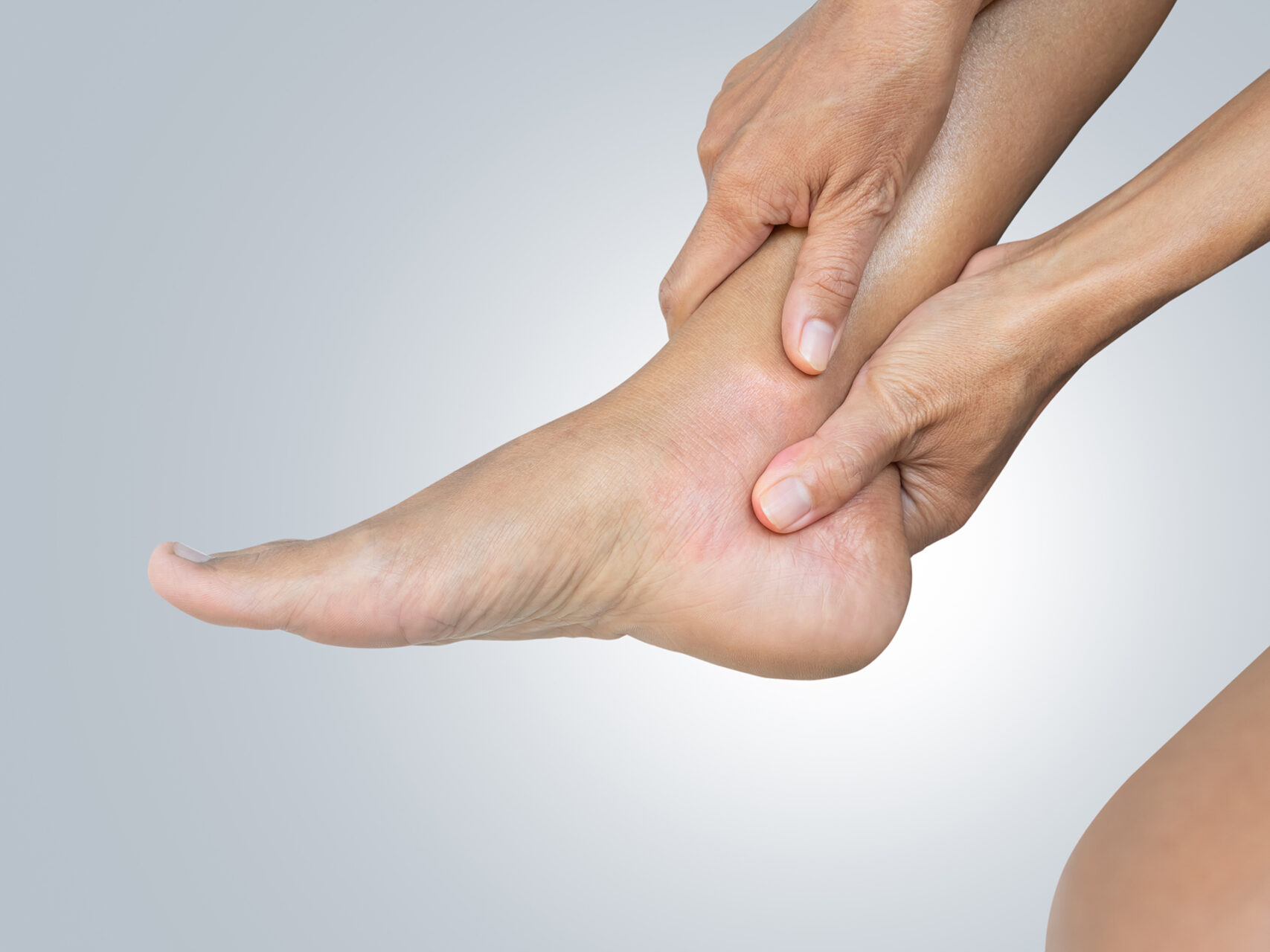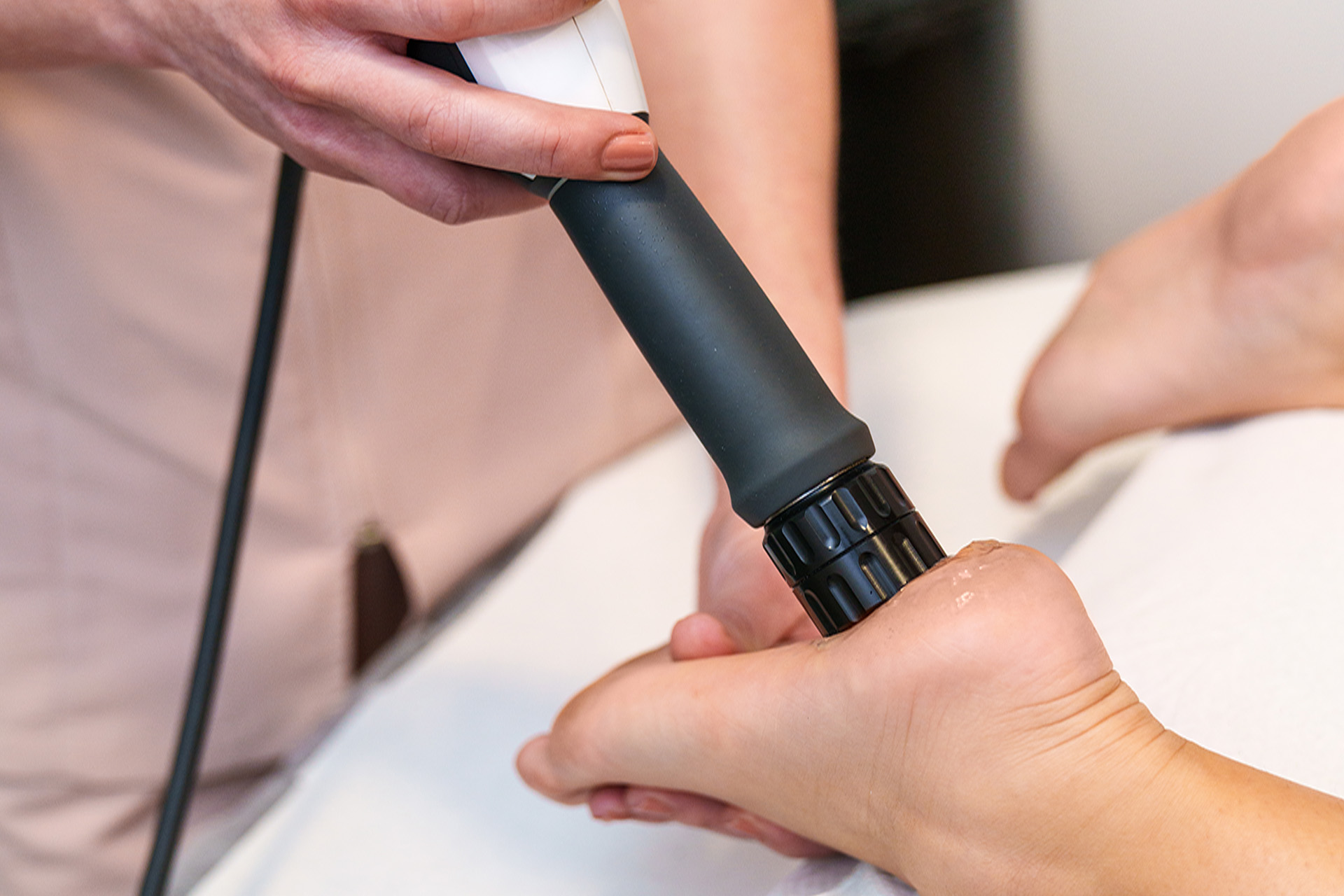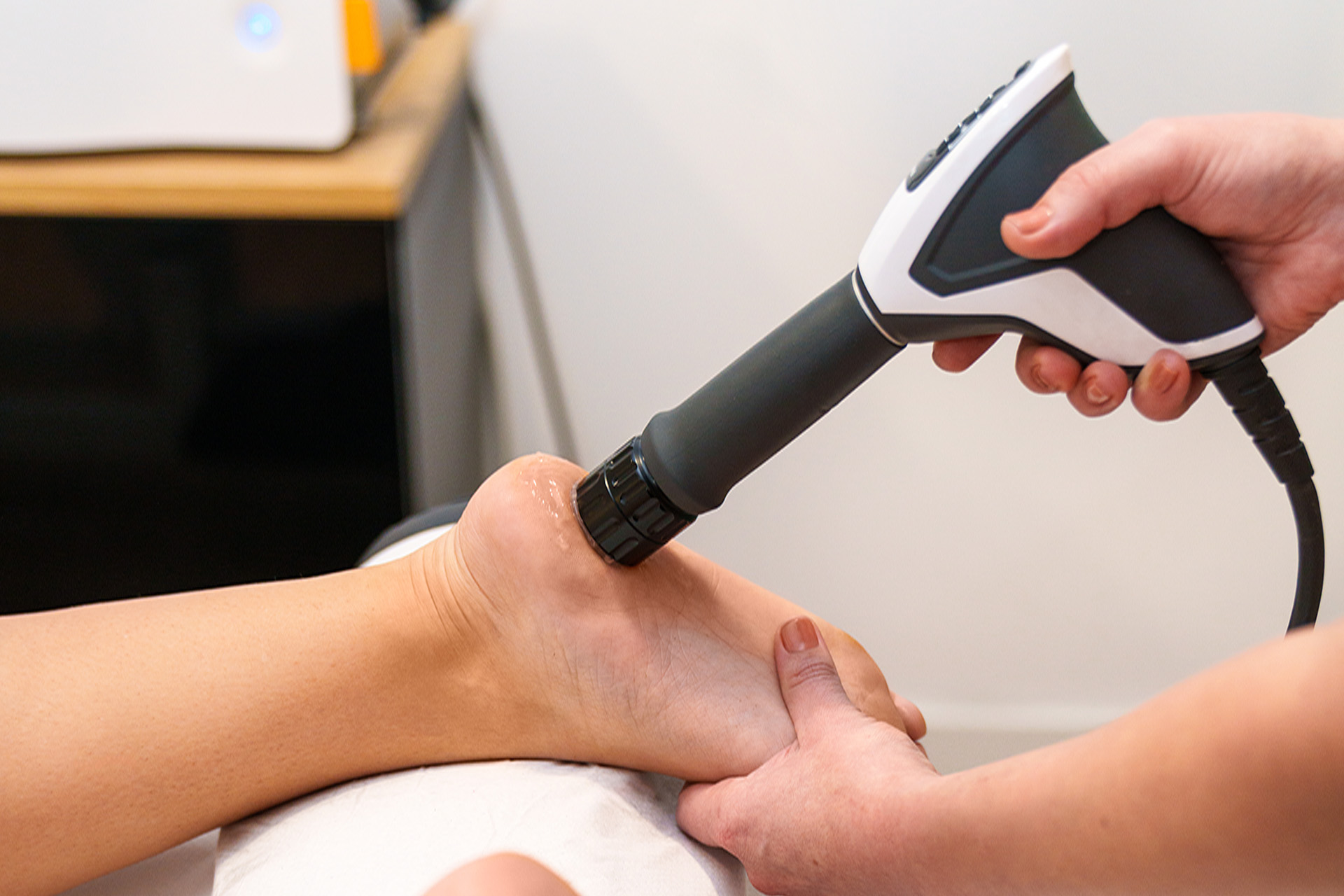Understanding Plantar Fasciitis Heel Pain
Plantar fasciitis is the most common cause of heel pain, affecting people across the world regardless of age or activity level. Some cases will resolve with rest and conservative care, but persistent plantar fasciitis requires targeted treatment to prevent chronic discomfort in the heel.
Plantar fasciitis pain usually worsens in the morning with the first few steps out of bed, causing sharp stabbing sensations in the heel. The pain can also radiate to the bottom of your foot. As the day goes on, the symptoms often subside as the fascia warms up. Symptoms can return after prolonged standing or activity. If left untreated, plantar fasciitis heel pain can become a long-term issue that affects mobility and overall quality of life.
The specialised care of a podiatrist is key in diagnosing and treating plantar fasciitis. These healthcare professionals can develop a personalised treatment plan to alleviate pain and prevent recurrence by identifying the underlying biomechanical issues.

What Is Plantar Fasciitis?
Plantar fasciitis is a common condition where the plantar fascia – a thick band of tissue that runs from the heel bone to the toes – becomes inflamed. This vital ligament acts as a shock absorber and supports the foot arch, which is essential for walking. Overuse, strain or injury can cause the plantar fascia to become inflamed and painful.
Causes and Risk Factors
As mentioned, plantar fasciitis heel pain is caused by overuse or repetitive strain on the plantar fascia. Here are some of the factors that can contribute to this condition:
- Poor Foot Mechanics: Biomechanical issues such as flat feet or high arches can put undue extra stress on the plantar fascia
- Obesity: Excess weight puts more load on your feet and the plantar fascia
- Inappropriate Footwear: Shoes without proper arch support or cushioning can aggravate the condition by forcing the plantar fascia to compensate for the lack of support
- Health Conditions: Conditions like rheumatoid arthritis, diabetes, tight calf muscles or Achilles tendon can also increase the risk of plantar fasciitis by affecting the overall health of the foot
- High-Impact Activities: Sports that involve running or jumping can put repetitive stress on the plantar fascia and cause inflammation
Knowing these risk factors can help you prevent or manage your plantar fasciitis heel pain. However, sometimes, additional help from a podiatrist is necessary to resolve the issue.

Plantar Fasciitis Pain Symptoms
The symptoms of plantar fasciitis can vary, but the most common are:
- Heel Pain: Sharp stabbing pain in the heel or bottom of the foot, especially with the first few steps in the morning
- Activity-Related Pain: Pain that worsens with prolonged standing, walking or other activities and seems to subside with rest
- Morning Stiffness: Pain and stiffness after periods of inactivity like sleeping or sitting
- Swelling and Redness: Inflammation can cause visible swelling or redness in the heel or bottom of the foot
- Limited Mobility: Stiffness or reduced range of motion in the foot or ankle makes walking difficult
It’s important to recognise and acknowledge these symptoms if they affect you. Many, athletes or otherwise, unwisely ignore symptoms, believing them to be resolved on their own. However, a proper diagnosis can help you receive the needed management and prevent your condition from worsening.

How is Plantar Fasciitis Diagnosed
Plantar fasciitis is diagnosed by a physical examination by an expert podiatrist. The diagnosis may involve a visual examination for signs of inflammation, swelling or structural abnormalities. The podiatrist may also use palpation, which applies light pressure to the plantar fascia to feel tender and painful areas.
Discuss your symptoms, medical history, and activities with your podiatrist so they can understand if there are factors contributing to your condition. A professional diagnosis is key to creating proper management for your condition.

Footwear Assessments for Support
One of the simplest and most effective ways to manage plantar fasciitis heel pain is to wear proper footwear. A podiatrist-led footwear assessment will ensure your shoes have adequate arch support, heel cushioning and shock absorption. Properly fitted shoes will reduce the strain on the plantar fascia, minimise the pain, and promote long-term foot health.
Orthoses for Custom Support for Pain Relief
Custom orthoses are another important part of a treatment plan for plantar fasciitis heel pain. These custom insoles provide arch support and biomechanical correction to distribute pressure evenly across the foot. By reducing the strain on your foot, custom orthoses can provide pain relief for plantar fasciitis heel pain, making you more comfortable while aiding your recovery.

Mobilisation Exercises for Plantar Fasciitis Heel Pain
Mobilisation exercises for plantar fasciitis heel pain can help stretch and strengthen the afflicted area, improving flexibility and reducing tension in the plantar fascia.
These exercises can also help with foot pain associated with plantar fasciitis:
- Doing calf stretches can help. Stand with one foot behind the other and press the back heel into the ground while leaning forward to lengthen the Achilles tendon and plantar fascia.
- Roll your foot over a massage ball or frozen water bottle to do a deep tissue massage, breaking up adhesions and increasing blood circulation.
- Toe curls and towel scrunches engage the intrinsic foot muscles to improve arch stability and reduce strain on the plantar fascia.
These are just a few exercises a podiatrist could offer you to improve your condition. A podiatrist may also prescribe more mobilisation exercises that are catered to your condition, such as eccentric heel drops, where you slowly lower the heels from a raised position to strengthen the lower leg muscles and improve foot mechanics to prevent further irritation.

Extracorporeal Shockwave Therapy for Chronic Plantar Fasciitis Heel Pain
Extracorporeal Shockwave Therapy is a game changer for patients with chronic plantar fasciitis. This non-invasive treatment uses high-energy sound waves to create controlled microtrauma in the affected tissue to bolster the body’s natural healing response. It also stimulates angiogenesis (formation of new blood vessels) to improve circulation and deliver nutrients to the damaged plantar fascia.
Also, Shockwave Therapy accelerates cellular regeneration and breaks down calcified tissue deposits that cause chronic pain. This can modulate pain receptors and reduce inflammation, providing long-term relief for those who haven’t responded to conventional treatments, making it an excellent option for chronic plantar fasciitis.

RehaWalk® Gait Analysis and Rehabilitation
Biomechanical imbalances can contribute to plantar fasciitis, so RehaWalk® Gait Analysis is an important tool for long-term recovery. This high-tech pressure sensor treadmill provides real-time feedback on foot pressure and gait mechanics. By identifying abnormalities in movement, podiatrists can prescribe gait retraining, targeted strengthening exercises, and customised orthoses to address the root cause of plantar fasciitis heel pain and create a sustainable recovery plan.

Complications and Related Conditions
If left untreated, plantar fasciitis can lead to chronic heel pain that interferes with your daily activities and quality of life. It can also cause muscle strain in the foot and calf muscle strain due to your altered gait. This compensatory movement can also cause Achilles tendon inflammation or Achilles tendonitis. Sometimes, you may develop heel spurs or bony growths on the heel bone due to prolonged plantar fascia strain.
In rare cases, your plantar fascia may rupture or tear, causing immense pain and leading to the loss of arch support and other biomechanical issues.
A podiatrist can help you develop a personalised exercise program to relieve pain and prevent future episodes. By understanding the causes, symptoms and treatment options, you can take proactive steps to have healthy feet and prevent plantar fasciitis.
Podiatric Rehabilitation in Chronic Cases
For chronic plantar fasciitis that doesn’t respond to standard treatments, podiatric rehabilitation offers:
- Physical Therapy: Strengthening exercises for the lower leg and foot can restore mobility and prevent recurrent plantar fasciitis.
- Gait Retraining: Poor walking mechanics can cause heel pain. Gait retraining with RehaWalk® Gait Analysis helps correct movement patterns for long-term relief.
- Manual Therapy: Soft tissue manipulation and deep tissue massage assist in breaking up adhesions and promoting circulation in the affected area.
When to Have Surgery for Plantar Fasciitis
While most cases of plantar fasciitis respond to conservative treatment, severe cases that have been ongoing for more than a year despite treatment may require surgery. Plantar fasciotomy is a minimally invasive procedure where part of the plantar fascia is released to relieve tension and pain. Importantly, podiatrists will exhaust all non-surgical options before considering this approach.
Lifestyle Changes and Strategies to Prevent Plantar Fasciitis
Managing plantar fasciitis heel pain is more than just short-term relief. Long-term foot health is about lifestyle changes that prevent recurrence:
- Weight: Excess weight stresses the plantar fascia and causes inflammation and pain. Being at a healthy weight reduces the pressure and improves foot function.
- Activity Modification: Avoid high-impact activities like running on hard surfaces to prevent exacerbating plantar fasciitis symptoms.
- Stretching and Strengthening Exercises: Regular stretching of the Achilles tendon, calf muscles, and plantar fascia improves flexibility and reduces tension in the foot.
- Footwear: Shoes with good arch support, firm midsoles and cushioned heels can reduce discomfort and prevent further strain on the plantar fascia.
Take the First Step to Pain-Free Living
Don’t let plantar fasciitis heel pain hold you back from living a good life. Seek early intervention from an expert podiatrist to prevent chronic discomfort and regain mobility. You can take confident steps to achieve long-term relief with interventions like Shockwave Therapy, custom orthoses, and RehaWalk® Gait Analysis.
Schedule a consultation today with The Foot Practice to explore your options and regain comfort in every step you take.






